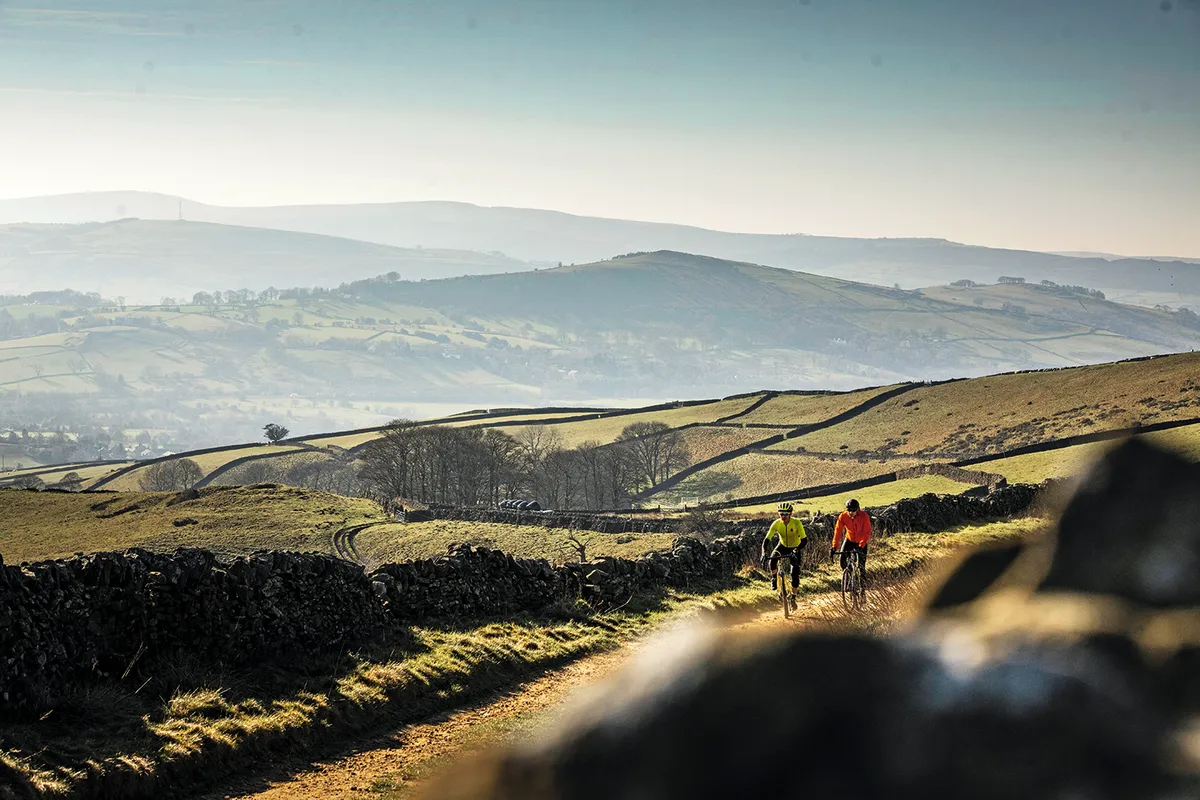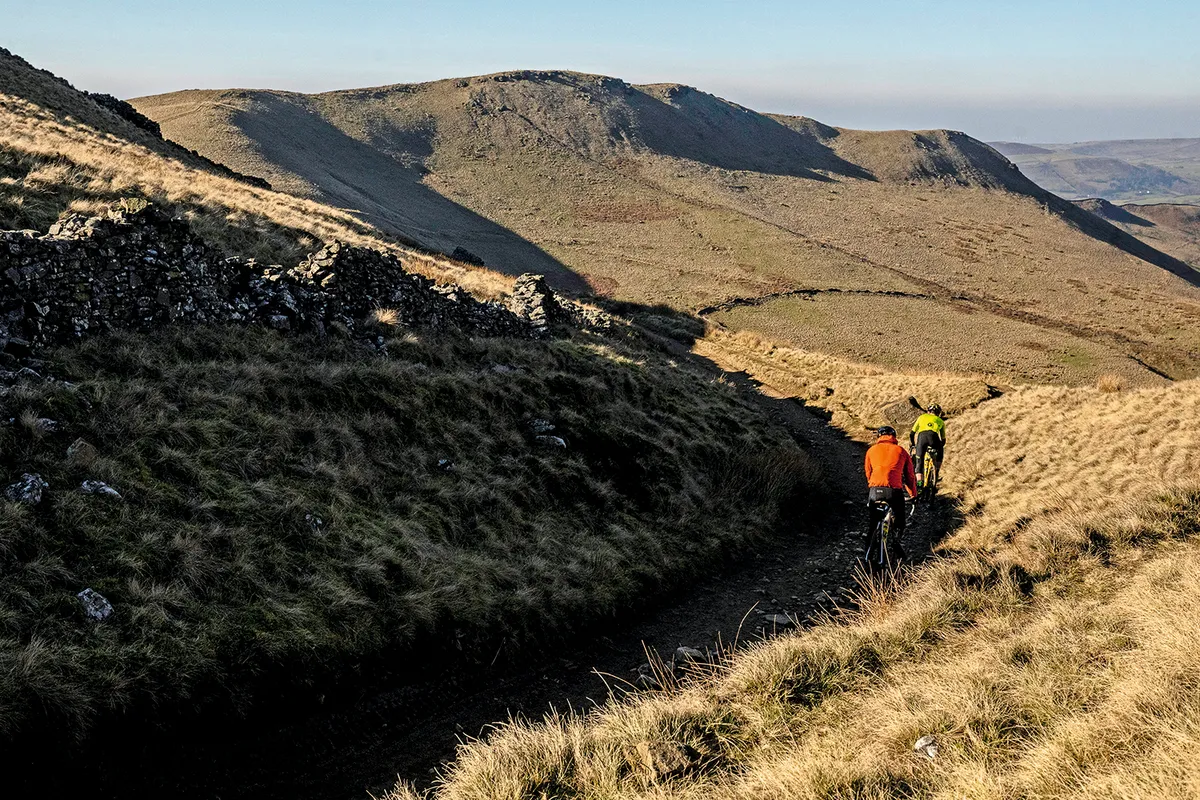In the second instalment of our Adventure Addicts series in association with Scott Sports, roadie Mark Bailey joins former British CX champion Nick Craig in his Peak District playground to learn the way of the gravel.
Why road cyclists should try gravel riding
Humans are creatures of habit, but can also thrive on change. With that in mind, I’m in the Peak District for an introduction into gravel riding, a trip designed to help me escape my usual road-riding routine and explore narrow towpaths, bumpy bridleways, muddy climbs and stony descents in pursuit of a wilder off-road experience.
But, like all the best bike journeys, this one begins in a cosy kitchen, with an Ordnance Survey map spread across the table, a military-style debate over kit and the buzz of a new adventure.
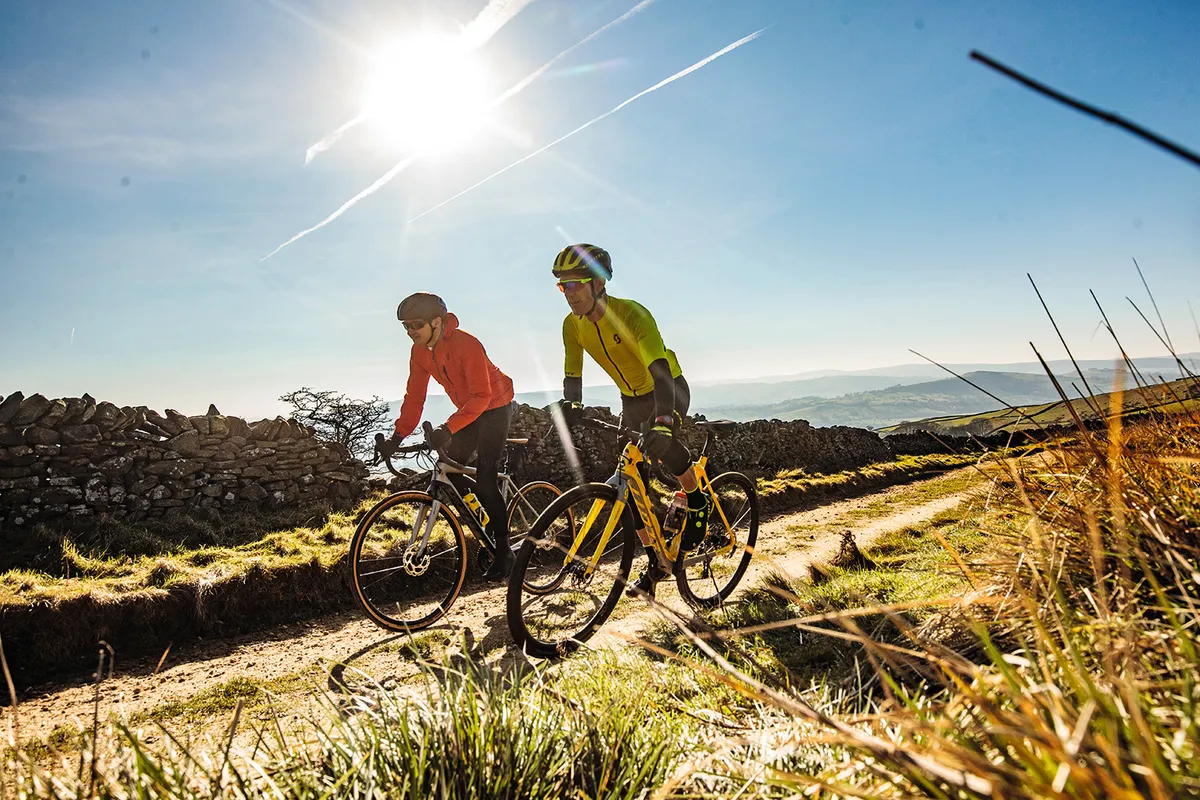
The kitchen belongs to Nick Craig, a former professional cyclist who lives in the old mill town of Hayfield, which sits just beneath the iconic gritstone cliffs of Kinder Scout. Having won three national cyclocross titles and four national mountain bike titles, he is the perfect guide to gravel riding.
“Road cyclists will find gravel riding a lot of fun because gravel bikes open up a whole new world of interesting places to ride,” he insists. When I first read about gravel bikes – which combine race-ready road frames with thick tyres and disc brakes, liberating you to tackle tarmac and trails on the same bike – I was intrigued.
As a road cyclist I love epic 100km rides and the thrill of speed, but I instinctively seek out scenic spots and quieter backroads. To fuse adrenaline with adventure – blasting along a road at 40km/h then darting off-road to explore some trails – sounds like something that I could quickly embrace.
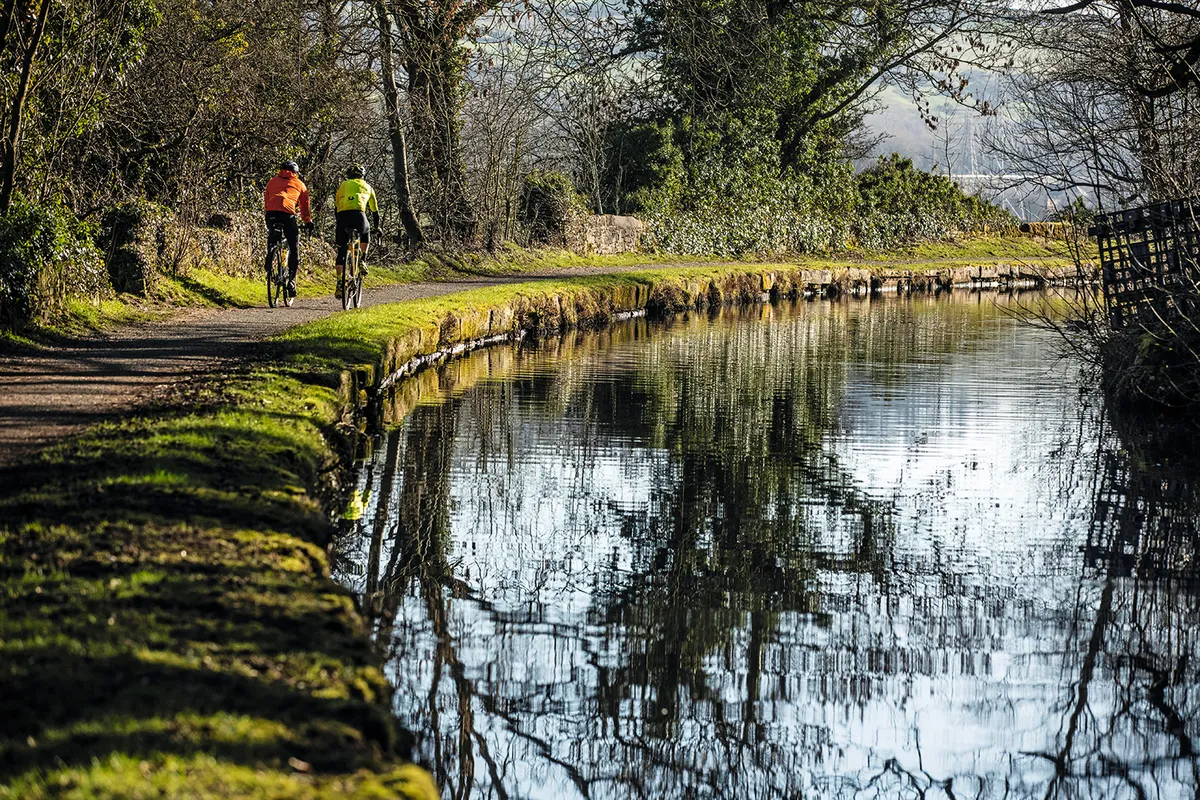
Scott Addict Gravel 30
I’m riding a Scott Addict Gravel 30. Its 35mm Schwalbe G-One Allround knobblies are a whole 12mm wider than my road tyres, and its confidence-boosting Shimano hydraulic disc brakes, should give me all the stopping power I’ll need.
What’s more it has an adventure-ready 11-34 rear cassette, which, since the biggest sprocket on my road bike is a 28, feels huge in comparison.
How to plan a gravel ride
The bike may be ready, but I have no idea how to plan a gravel adventure, which is why Nick and his OS map are here to help.
“As well as normal roads, you can ride on gravel trails, bridleways, mountain bike trails, disused railway lines and towpaths,” explains Nick, tracing our planned route with his finger. “You just connect them up to make your own route.”
Whereas road cyclists are limited to riding the pink and orange road lines on an OS map, gravel bikes enable you to explore the dotted green and orange bridleways, footpaths and byways, as well as any trails running through the green and brown smudges of moorland, forests and mountains.
You can also explore unsurfaced roads, Forestry Commission tracks and easier mountain bike trails, which are graded green or blue.
New gravel riders can use route-planning tech such as Strava and Garmin Connect, which list many off-road trails, as well as the OS Maps app which includes aerial 3D imagery.
The Komoot app harnesses the input of local riders to provide a detailed analysis of routes, elevations and profiles. “Komoot is great for off-road routes because it shows all the local trails which make gravel riding so much fun,” says Nick. “But I find it best to combine maps and websites to work out the best routes.”
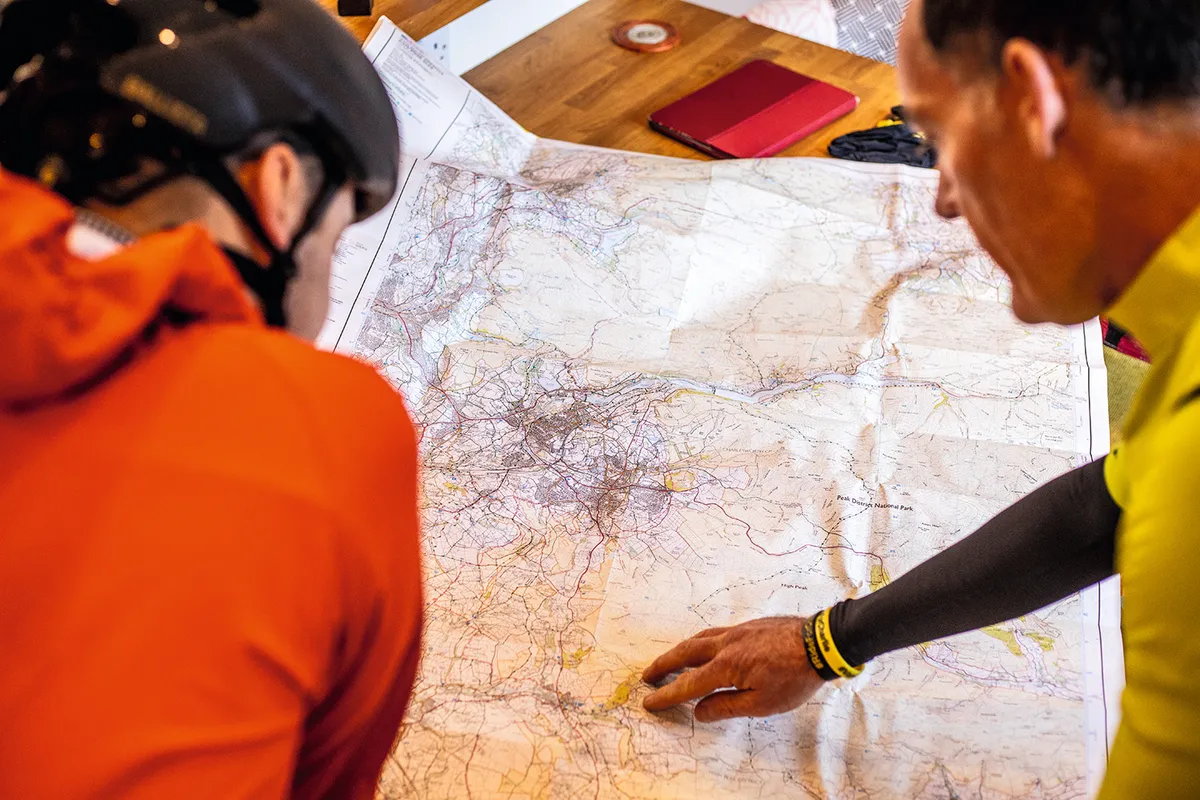
What to take on your first gravel ride
Before we head out, Nick talks me through the kit required for gravel riding.
Road cyclists can wear all their usual clobber: with the thicker tyres, you don’t need extra padding in your bib-shorts, and you won’t ride anywhere which requires knee pads or a full-face helmet. You have to carry the usual back-up kit of tyre levers, inner tubes, tyre plugs, a multi-tool and some food and drink.
In more remote terrain it’s best to also pack a compact chain tool, spare link (Shimano Speed Quick Link and SRAM Power Link both offer tool-free assembly) and repair patches.
Mountain bike shoes and pedals, and a tubeless tyre setup, are the two major kit upgrades you can make and there’ll be more about this in next month's instalment.
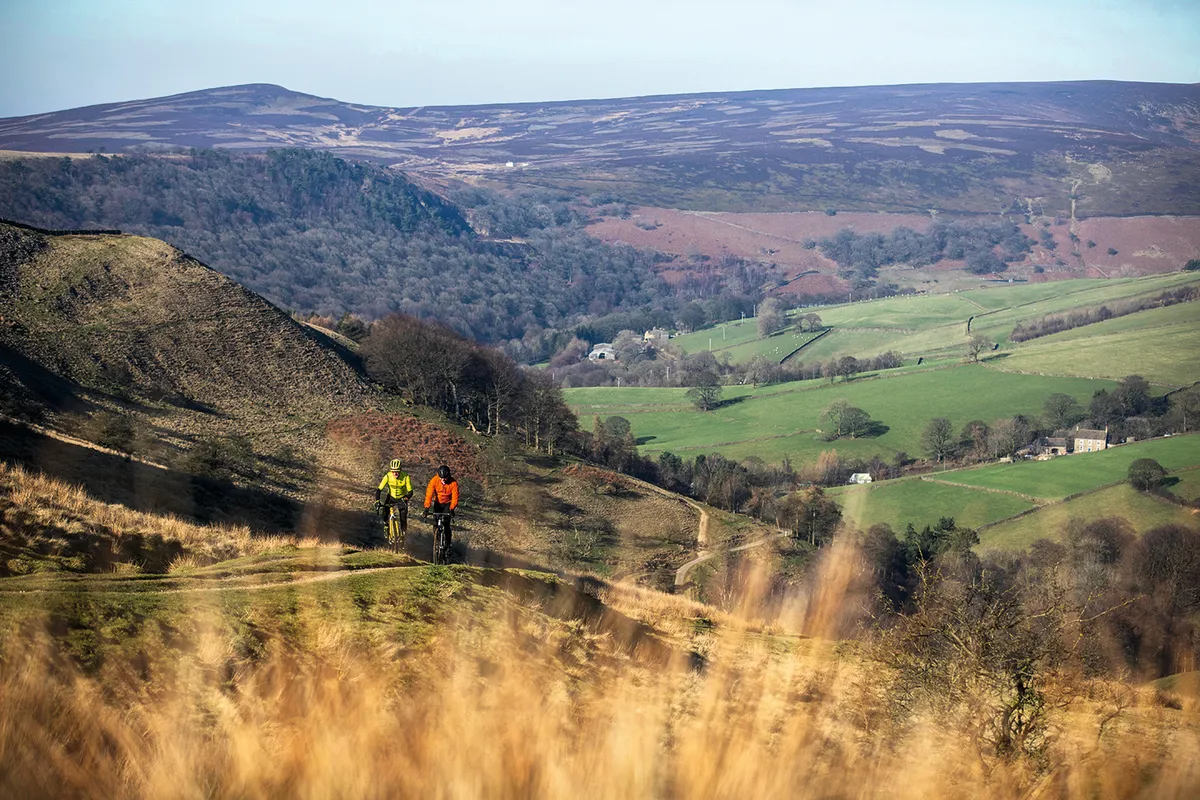
Gravel riding in the Peak District
When we start riding through the sun-drenched lanes of Hayfield, I immediately forget I’m riding a gravel bike. The geometry is almost identical to my road bike and the 35mm tyres, which feature tiny dimples, purr smoothly on the road.
The bike feels racy and agile, just like a road bike. “I ride the same setup on the road and on trails,” says Nick. “But a newcomer might want to drop the saddle 5mm to feel more comfortable on the terrain.” Of course, you can always install a new-fangled electronic dropper seatpost so you can change your position while you ride.
Without much warning, we suddenly veer off the road and onto the Sett Valley Trail. The scenic track follows a disused railway line and forms part of the Pennine Bridleway National Trail.
The road cycling devil on my shoulder starts worrying about falls and punctures, while the gravel cycling angel on my other shoulder reminds me that my bike’s chunky tyres can handle it.
“It can take a while for road cyclists to adapt their mindset,” says Nick. To prove the point, he darts off the track. Just when I think he’s about to plough into a tree trunk, he disappears onto a hidden trail and emerges back onto the main path a few seconds later. “When you get used to them, gravel bikes change your whole perspective,” he says.
On a normal road ride, I stay alert for potholes and wet leaves but on a gravel bike I’m soon ploughing through puddles and bumping over stones. After a short time we reach the old cotton-spinning town of New Mills.
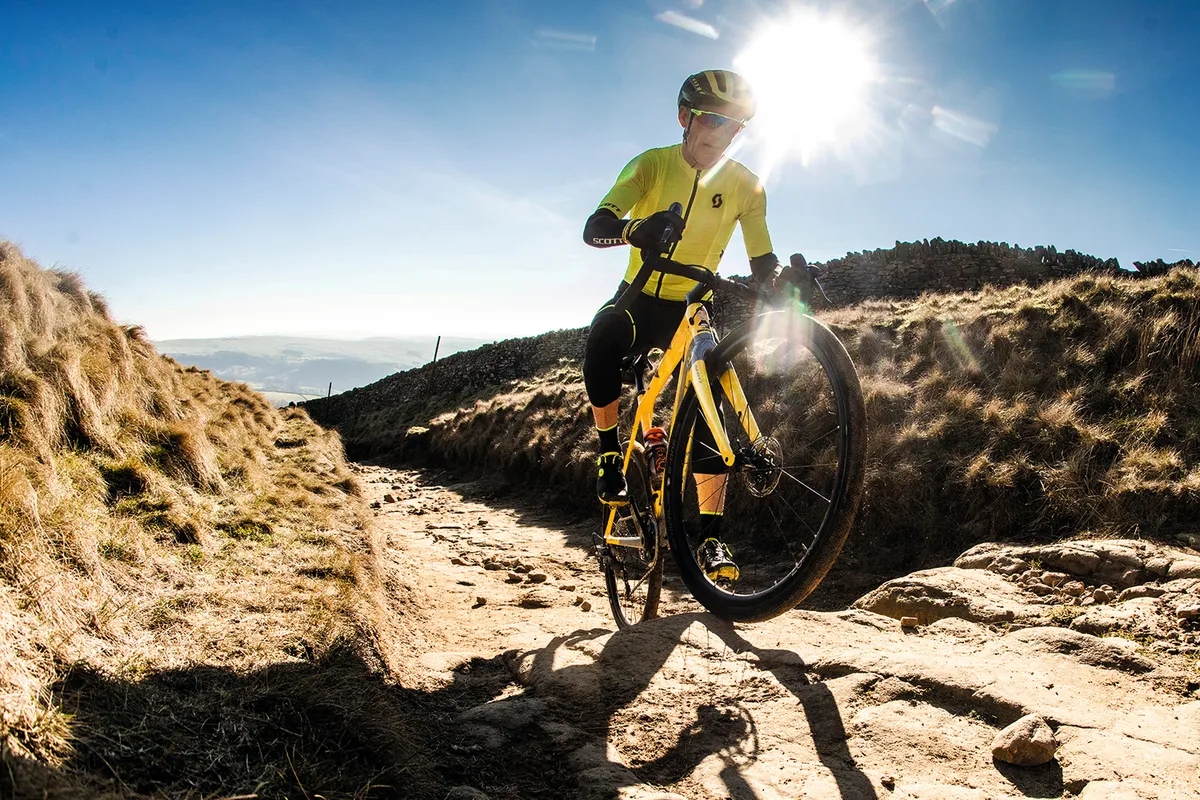
Gravel riding tips
1. Don’t venture too far
I’d assumed we’d be out in the hills all day but Nick says for the best gravel experience it’s better to aim for variety. “It’s usually good to find places on the edges of towns and cities because that’s where you get all the interesting canal paths, bridleways and old railways, as well as the typical trails mountain bikers would follow. That’s when you’ll get the most out of a gravel bike and really see what it can do.”
2. Stay seated on steep climbs
We take a sharp turn and emerge on a muddy uphill trail. I’m in too big a gear, which leaves my back wheel slipping. “Reading the route up ahead is important so you can prepare for what’s next,” advises Nick, who reminds me to stay seated on steep climbs to weigh down the back wheel. I try it and successfully wriggle up the slippery track.
3. Use your weight to stay in control
The first major obstacle of the day looms into view: a steep-sided canal bridge. The thought of bombing down the other side, however, leaves me terrified. “Standing up over the saddle will allow you to use your body to counter the terrain,” advises Nick. It’s against all my road-cycling instincts to stand up on a descent, but those chunkier tyres make it possible. I keep my weight towards the back of the bike and feel much more agile and in control.
“Think about how a cat walks gently on a roof, carefully adjusting its weight and balance,” says Nick. “Those subtle shifts are what you are aiming for.”
4. Keep a high cadence
Having survived the steep ramp, I’m annoyed when a few moments later I tumble sideways on an innocuous muddy slope in a park. “A smooth and steady cadence is always best on unstable terrain so you don’t create excessive torque and cause wheel spin,” says Nick.
5. Use the momentum
A key lesson I’ve learned from watching Nick all day is the importance of momentum. As a road cyclist, I instinctively get nervous at the sight of any hazard up ahead and I’m quick to brake or swerve. “On gravel, speed is usually your friend,” says Nick. “When your wheels are rolling you have better traction and grip.” When we encounter our first gravel section, I toy with different speeds: as soon as I slow down I start sinking into the stones, whereas at speed the bike dances over the gravel.
6. Work on your core
We swing onto a stony path to climb the ominously-named Mount Famine. I watch, fascinated, as Nick makes countless micro-adjustments as he rides up the trail, picking his way around boulders to find the smoothest path. The wider handlebars of a gravel bike make this much easier, but a few planks and sit-ups at home would really help because your core muscles get taxed much more out on the trails than on the road.
7. Choose your kit well
As my saddle bag bounces around chaotically, Nick points out some of his own Syncros gadgets: a bottle cage with an integrated multitool slot and a saddle bag which screws directly into the saddle, which both serve to keep you light and well balanced on the trails.
From the top of Mount Famine we enjoy sweeping views of the moorland terrain, which is neatly carved up by stone walls into a vast patchwork quilt of browns and greens. I realise once again how thick the silence is up here, far removed from the traffic down below.
8. Know your limits
A few mountain bikers pass by and say there are some crazy descents we could try nearby. But it’s important to know your limits. Unlike them, I’m not on a chunky downhill bike with full suspension. “When you are planning your route, keep an eye on the contour lines to make sure it’s not too steep,” advises Nick. “There are usually different ways to get down a mountain. But you can always get off and walk for a section if you need to.”
9. Descend with confidence
I knew the long and bumpy descent into Hayfield would be the hardest part of the day and it doesn’t disappoint. As a road cyclist, the sight of small rocks and loose stones has all my synapses blinking on red alert. Nick gives me a few pointers: keep your head up to help identify the smoothest route down, and try not to go so slow that you lose your balance – easily done if you are feeling nervous. I successfully trundle down the stony path but when I reach a section of thick mud I unclip and walk.
10. Enjoy the versatility
We emerge onto a main road and I realise how peaceful our ride has been so far. After the tranquillity of the trails and canal paths, riding next to cars feels strange, although it’s nice to see how easily these versatile bikes switch from grinding over gravel to slicing along tarmac again.
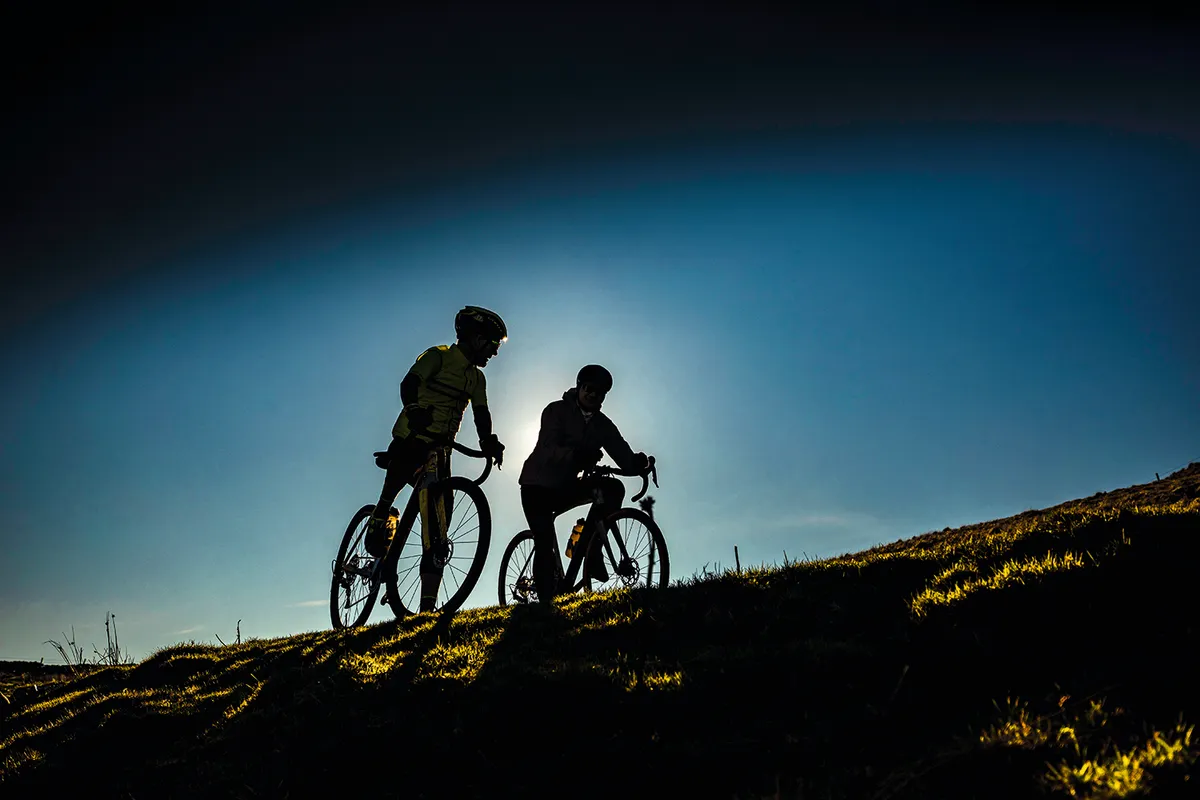
What you’ll learn from gravel riding
Gravel biking is about testing – but also recognising – your limits. And being able to connect different trails by walking a few segments is what liberates you to reach places you wouldn’t otherwise visit.
When we arrive back in Hayfield for some toasted teacakes at Millie’s Tea Rooms, I am amazed to hear that we have only cycled around 25km, despite being out on the trails for hours.
But in that short loop we’ve enjoyed a kaleidoscope of rugged peaks, dazzling green valleys, peaceful canal paths, adrenaline soaked gravel dashes, muddy falls, and lots of spontaneous debates over which path to take next.
Planning your route is crucial, but making impromptu decisions along the way is all part of the fun. Gravel cycling is one activity where to say “get lost” is an invitation, not an insult.
This article was produced in association with Scott Sports. Navigation and mapping assistance courtesy of Komoot.

